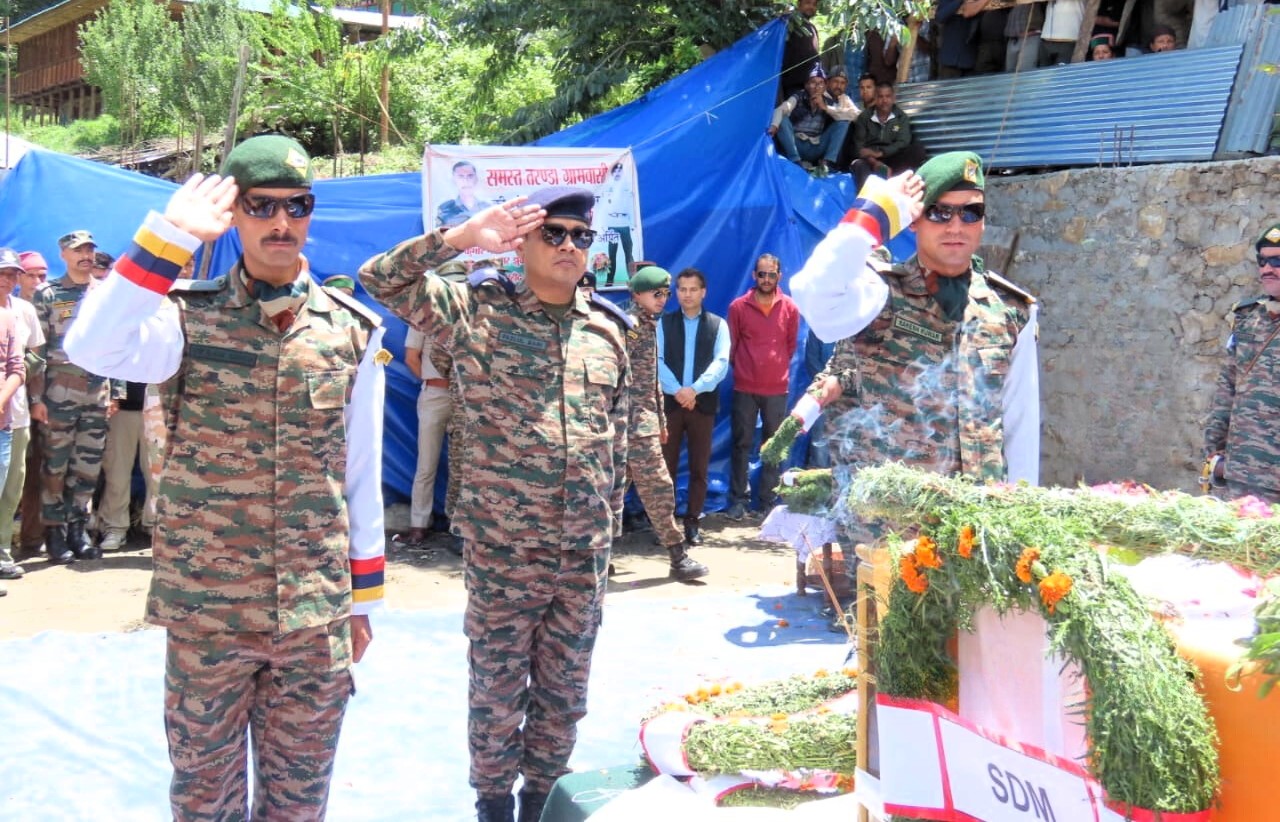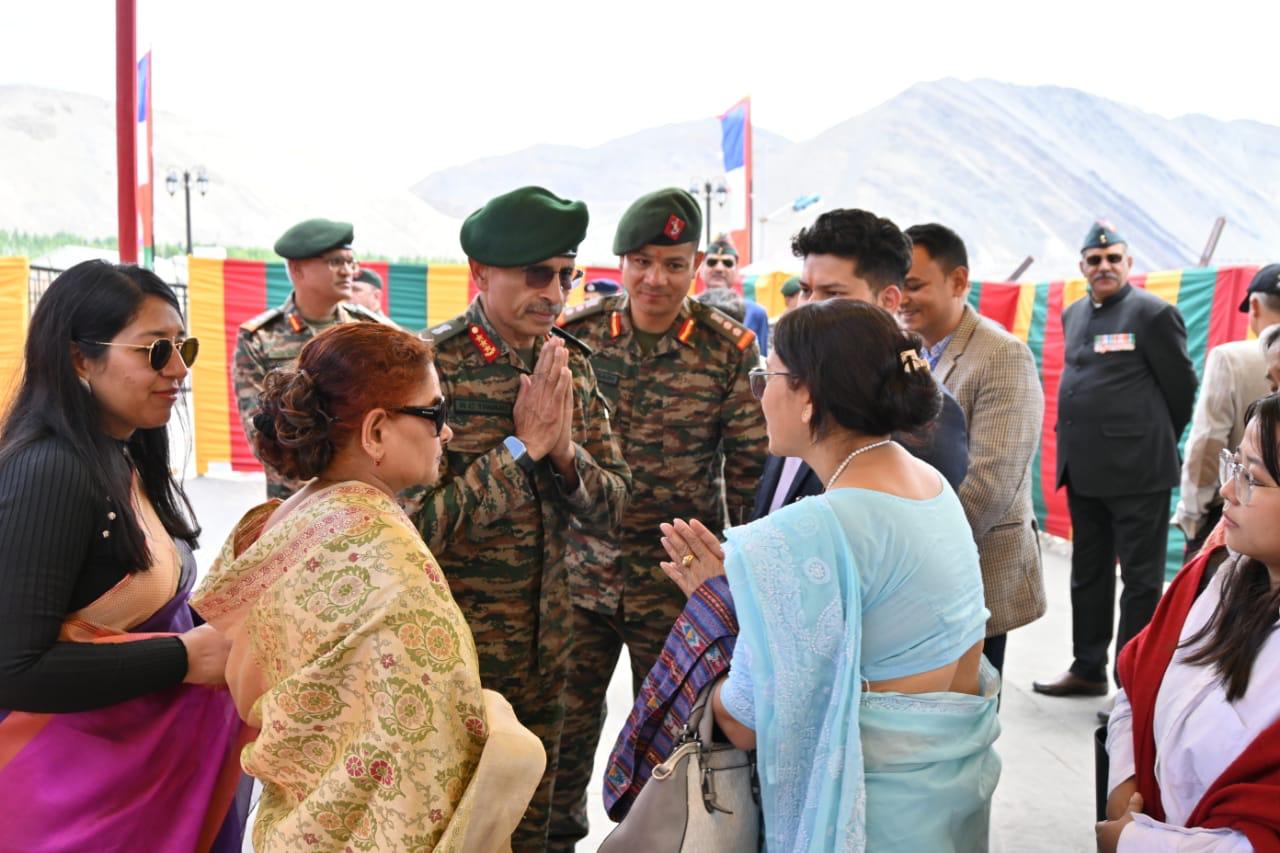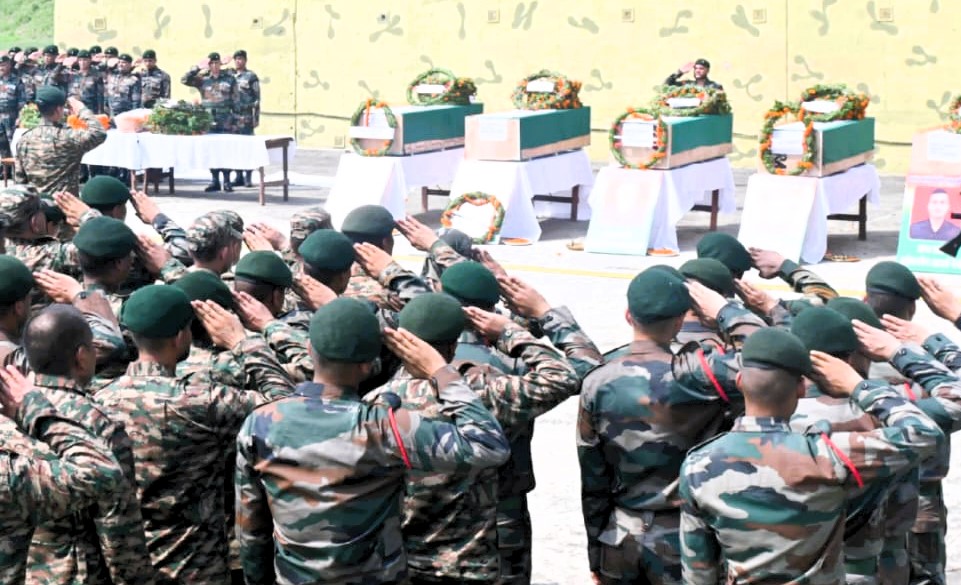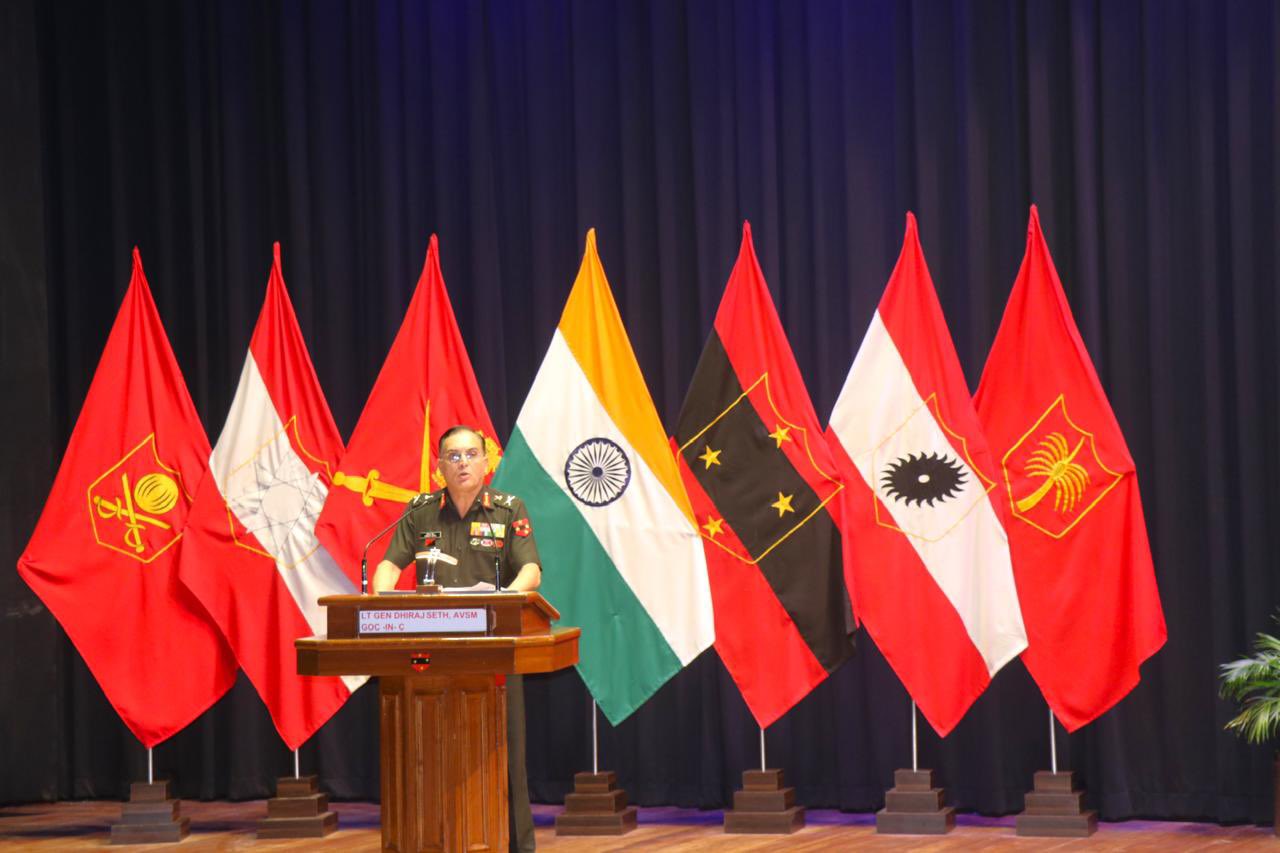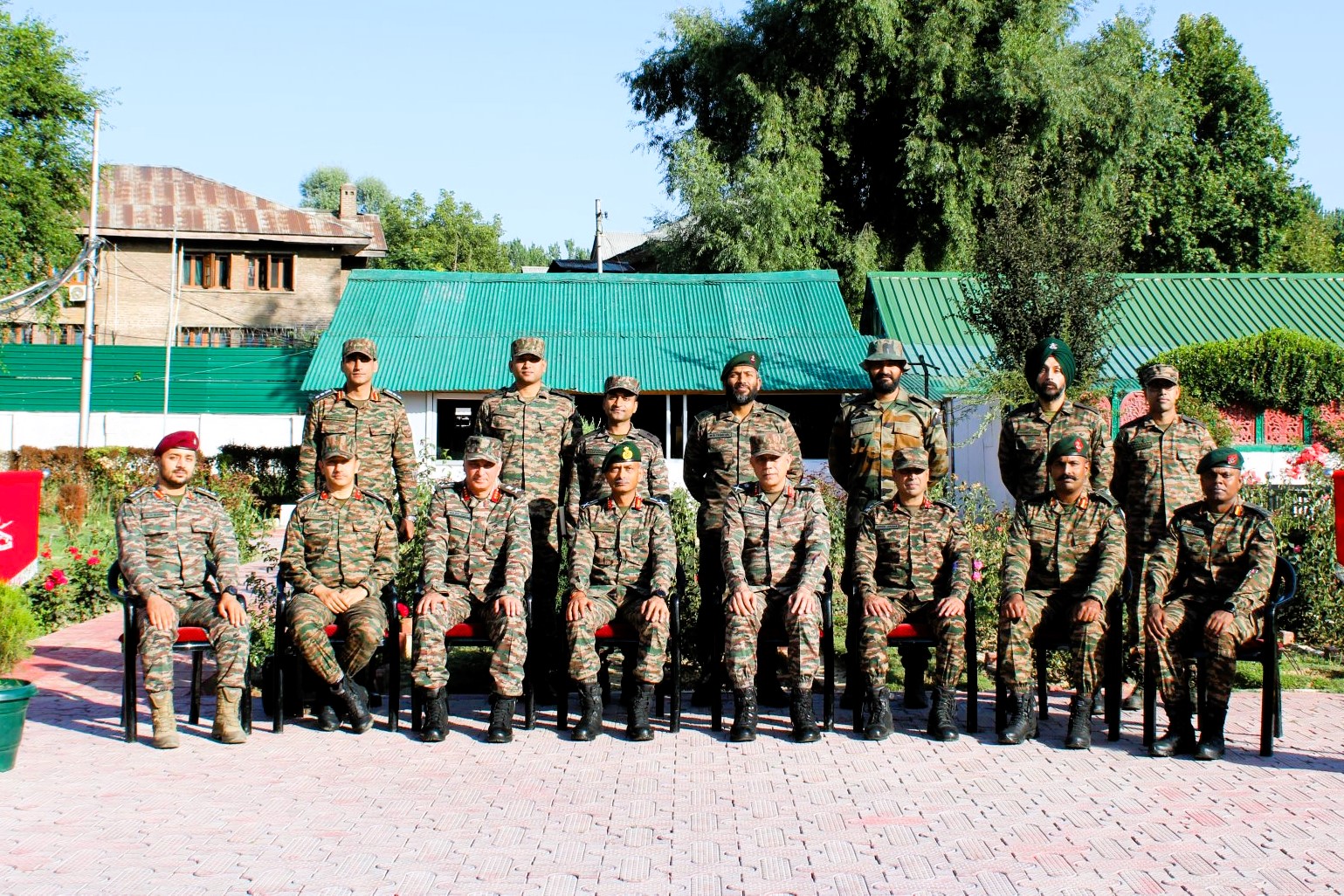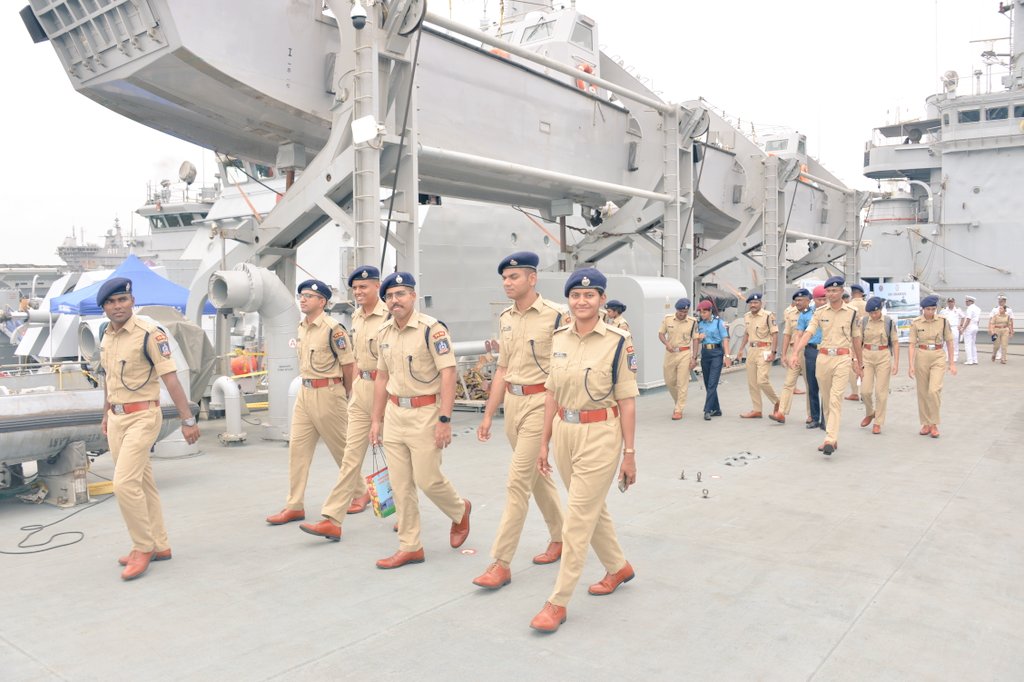Indian Army Recovers Bodies of Havildar Instructors from Mount Kun
In a somber but heroic mission, mountaineers from the High Altitude Warfare School (HAWS) successfully recovered the remains of three…
Lt Gen RC Tiwari Honors Fallen Heroes of Mashkoh Battalion in Leh
Lt Gen RC Tiwari, Army Commander Eastern Command and Colonel of the Kumaon and Naga Regiment and Kumaon Scouts, recently…
Indian Army Pays Tribute to Fallen Heroes in Kathua Sector, Jammu
The Nashak Navtara Corps, along with the Western Command, paid solemn tribute to five brave soldiers who made the ultimate…
Lt Gen Dhiraj Seth Stresses Operational Readiness and Innovation in Address to Southern Command Officers
Lt Gen Dhiraj Seth, AVSM, General Officer Commanding-in-Chief of the Southern Command, recently addressed the officers of the Southern Army,…
Lt Gen MV Suchindra Kumar Reviews Logistics and Security for Shri Amarnath Ji Yatra 2024
Lieutenant General MV Suchindra Kumar, Army Commander, Northern Command, conducted a thorough review of the logistics and security preparedness for…
27 IPS Trainees Visit Southern Naval Command to Enhance Inter-Agency Cooperation
A group of 27 trainees from the Sardar Vallabhbhai Patel National Police Academy (SVPNPA) visited the Southern Naval Command as…

